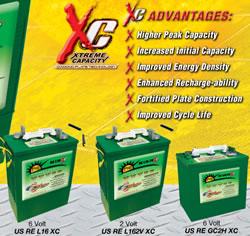Scientists Look to the Sky in Effort To Mitigate Carbon Problem
NextGen PV Soiling Mitigation
Latest Developments and Advances in Marine Energy
Semtive USA Introduces Wind System That Lowers Cost, Improves Roi of Residential and Commercial Renewable Energy
The Importance Solar Warranties and Customer Service
Shading Analysis: How To Do It And Get It Right
American Solar Repair Makes the Switch to the RT-MINI
Five Myths About DC Power Optimizers
A Deep Dive Into Improving The ROI For Commercial PV Solar Systems
Monetize That Runway!
How Keeping It Simple Can Lower O&M Costs
Experts Forecast the Wind Plant of the Future To Be Taller and More Economical
Operating Principles for Lead Acid Batteries
Solar Training Courses for 2022
Agrivoltaics: The New Frontier
Records 346 to 360 of 3117
First | Previous | Next | Last
Featured Product

